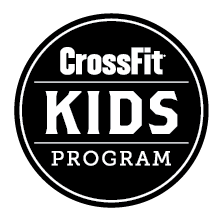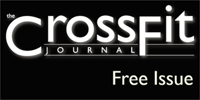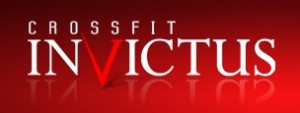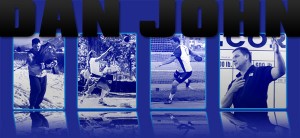20
May / 10
Critical Thinking
posted by: Marcus

Many of you may remember taking a critical thinking course in college and wondering why the heck this boring stuff was part of the general ed requirements. Depending on your teacher, you may or may not have gotten much out of the class but there is a reason why it’s required material. Personally, my critical thinking course was mainly aimed towards literature and this didn’t help me see the larger picture. It wasn’t until I took a psychology course that I understood what it meant to think critically. As part of the course, I read a book — Influence, the Psychology of Persuasion by Robert B. Cialdini. This book was a fairly easy read but truly opened my mind to techniques used by salesman and advertisers, among others. It’s a little bit like when Neo sees life outside the Matrix, as I haven’t perceived advertising the same since. Knowing the tactics commercials and pitchmen will use against you gives you a leg up, especially when it comes to food or the latest dietary supplement.
What surprises me though are people who accept advertising at face value. Those who see the label on a sugar-coated cereal that says it lowers cholesterol and neglect the adverse effect all that high fructose corn syrup (HFCS) will have on them. Or better yet, those who hear keywords like “wholesome” and assume the product is good for them. This also comes into play when it comes to studies. Have you wondered why the news runs a story saying red wine/chocolate/etc. is good for you, and then the next month it causes you cancer or worse? They are simply reporting on a study and it is vitally important to look with a critical eye at how exactly that study was performed. For example, what were the test conditions? How long was the study performed? More importantly, who funded this study? Unsurprisingly, studies that find in favor of a particular commodity quite often are funded by big business who holds a stake in that product. Cigarettes especially come to mind, but there have been responses to the HFCS backlash which are equally ridiculous yet may fool those who don’t question their sources.
With all this in mind, I want to give everyone a quick little mental exercise for the day. Here’s a study that was just released and you may have seen in the news. According to this study, high-fat meals cause problems for asthmatics. Take a look over the article and see what issues, if any, you may have with the study. Please post to comments your thoughts about the study. There’s not necessarily a right or wrong answer, but you may find it enlightening to see how others view the same article in a different way.
WOD 05.20.10
Make Up Day


 310.465.6565 |
310.465.6565 |
























6 Responses to “Critical Thinking”
Sean
May 20, 2010 at 9:53 AM
It’s odd to me that the researchers made no mention of other possible variables that could have affected their results (i.e. the inflammatory response from gluten in the bun or the insulin spike from the bun+hashbrowns). I understand if the study was designed to focus on the effects of fat on asthma, but good researchers try and eliminate as many extraneous variables as posible. It’s nearly impossible to account for all variables affecting a study, but it adds credibility when the researchers can discuss other things that could have affected the study’s results and try to discount them and/or suggest ways for future studies in the subject area to improve.
Drew
May 20, 2010 at 10:20 AM
Ok, slow news day at work today so I decided I would participate in this little exercise. First, Marcus, don’t give the cheerios people such hard of a time. They are saying it is going to lower cholesterol because you are replacing your usual three eggs scrambled in butter, 4 pieces of bacon, salt laden hash browns and catsup with a bowl of cheerios. Technically, they are right, your cholesterol will go down because you used to come out of the gate each day by eating 1,100 calories for breakfast, and now it is closer to 400 calories for the bowl of cereal. But I get your point.
Regarding the article at hand, keeping in mind the last science class I took was Physics in high school, here are my noted flaws-
1.) In thinking back to the lab days in middle school where we did cool stuff like light peanuts on fire to see how many calories were in them we usually ran 4-5 groups. We would have a control group, and 4 variations. This experiment has only two groups with no indication of trying to represent a ‘typical diet’.
2.) The study included 40 people, hardly a substantial pool of subjects to test. That means each person represents 2.5% of the study. That’s absurd.
3.) They don’t appear to have monitored any other part of those individuals days, specifically what else they ate, or if they, I don’t know, exercised?
4.) There are dozens of Asthma medications out there, they tested one.
5.) Furthermore, the foods in the two groups they used are contradictory. The second group ate “low fat yogurt” which some argue is a natural anti-inflammatory-
a. http://www.drweil.com/drw/ecs/pyramid/press-foodpyramid.html
6.) Lastly, and this is a small and a bit of a stretch example, but if you look at the University of Newcastle where the study took place, one of the chief supporters financially in 2008 was Oliver Foods and guess what they are all about? Reducing our fat intake and replacing it with their healthy food.
a. http://www.newcastle.edu.au/foundation/our-supporters/our-past-supporters.html
b. http://www.oliversrealfood.com.au/nutritional_info.htm
Like I said, perhaps a stretch but I found one supporter in one year worth information. I am sure if we review years past we could find similar sponsors along a thematic plane of ideals.
Scott
May 20, 2010 at 11:27 AM
Drew, I’m impressed with your detailed analysis.
I simply laughed at the test that compared 1,000 calories from fast food burgers and hash browns to 200 calories of yogurt. Aren’t there 100 differences between those options in addition to fat content? Calorie totals, Carb total, protein total, dairy, etc.
That doesn’t even get into the absurdly low sample size and lack of any control on the participants’ health entering the study.
I always try to consider the source when reading any article, study, etc. Of course, in this case you have to look deeper than the source. Wouldn’t you expect better from a site called Science Daily??
Jake
May 20, 2010 at 9:50 PM
PC-140
4+4sq
4+6Sq
4+8sq
5
5+2PC
Avelyne
May 21, 2010 at 9:15 AM
made up monday’s WOD
used 100# for RDL’s/20″ for BJ
=8:30
press 3×5 @ 70#
Becky
May 21, 2010 at 5:24 PM
PC: 78# PR!!
Chief
4,3+6PU,3+6PU, 3+3PC, 3+3PC